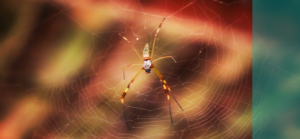
Behind the scenes of web-weaving
How in the world do they do it? Behavioral biologist, Andrew Gordus had the same curiosity about how in the world spiders build their webs with brains a fraction in size of a human’s brain.
It took a team of John Hopkins University researchers, plus the sophisticated technology of night vision and artificial intelligence, to track and record a spider’s every movement described as elegant, complex and geometrically precise. The research alone is fascinating.
Imagine an arena with infrared lights and cameras recording six spiders nightly constructing their webs with software specifically designed to detect limb movement. Picture looking at millions of individual leg actions throughout the tracking period and trying to document it all by hand. Instead, researchers trained machine vision software to detect the spider’s posture, frame by frame, and to provide data of everything the legs did to build a web.
Humans have been curious for centuries about how spiders appear to build their webs using only their sense of touch. With this research, scientists concluded that “the rules are encoded in their brains,” which for many spider species, “fill up over 80% of their body cavities, extending even into their legs.”
Benefits of research? What’s exciting is the fact that since the spider’s brain is built on the same fundamental blocks as humans, scientists can gain an understanding of larger brain systems, including humans.
